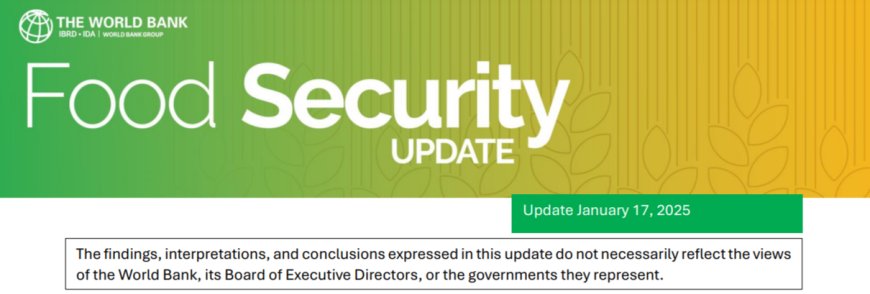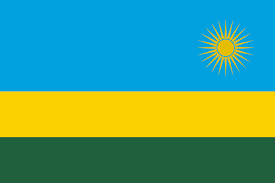Global Food Security Crisis Intensifies: Increasing Inflation, Trade Barriers, and World Bank Actions
Food price inflation is rapidly increasing in low- and middle-income countries, with 72.2% experiencing rates exceeding 5%. The World Bank’s $766 million West Africa Food Systems Resilience Program, along with other initiatives, seeks to tackle hunger and enhance agricultural resilience. Recent updates on the global food crisis are available.

Latest Food Security Data – January 21, 2025
Food price inflation remains high in many low- and middle-income countries. Recent data from September to December 2024 shows that 72.2% of low-income countries are experiencing inflation rates above 5%, an increase of 3.4 percentage points since the last update on December 13, 2024. In contrast, 43.5% of lower-middle-income countries have seen a decrease of 3.2 percentage points, while 38% of upper-middle-income countries report an increase of 5.0 percentage points. In high-income countries, 7.4% face higher inflation rates, up by 3.5 percentage points. Notably, in real terms, food price inflation exceeds overall inflation in 43.5% of the 161 countries for which data is available.
Download the latest brief on rising food insecurity and World Bank responses
Since the last update in December 2024, the indices for agricultural, cereal, and export prices have increased by 3% and 4%, respectively. Maize prices surged 9%, whereas wheat prices dropped 2%. Rice prices have remained unchanged since the last update. Year-over-year, maize prices have risen by 2%, while wheat and rice prices have fallen by 10% and 16%, respectively. Compared to January 2020, maize prices are 24% higher, wheat prices have decreased by 3%, and rice prices are up by 26%.
The Food and Agriculture Organization of the United Nations (FAO) has released the 2024 State of Agricultural Commodity Markets report, exploring the intricate relationships between food trade, diets, and nutrition. It underscores how global food trade influences dietary choices and health outcomes. The report asserts that trade is crucial in moving food from surplus regions to those in need, improving global food security by stabilizing supplies and prices. Nonetheless, the rapid globalization of food markets raises essential concerns about negative impacts, including the depletion of natural resources, growing inequality among resource-poor farmers, and an increase in the consumption of energy-dense, low-nutrition foods. These trends may further worsen dietary habits and health outcomes.
The United Nations Office for the Coordination of Humanitarian Affairs (UNOCHA) reports in its Global Humanitarian Overview 2025 an alarming situation regarding global food security, with more than 280 million people facing acute hunger daily. This report underscores the connection between food security and more significant humanitarian challenges, calling for a collective global response to tackle the impacts of food insecurity.
The World Bank details noteworthy advancements and aspirational strategies for ensuring global food security and fostering sustainable agriculture. The blog underscores the Bank's distinctive capability to drive transformation, positioning it as the largest financer of agriculture and food initiatives in developing nations. Meanwhile, the International Food Policy Research Institute discusses the challenges of gauging and overseeing global food networks. The blog stresses the need for coordinated, advanced tools to capture these systems' intricate interactions and trade-offs effectively.
Following Russia’s invasion of Ukraine, trade-related policies imposed by countries have surged. The global food crisis has been partially made worse by the growing number of food and fertilizer trade restrictions put in place by countries to increase domestic supply and reduce prices. As of January 2025, 17 countries have implemented 22 food export bans, and eight have implemented 12 export-limiting measures.
Addressing Food Insecurity by the World Bank
Our initiatives for food and nutrition security currently reach over 90 countries. They include both urgent interventions, such as improving social protection, and long-term strategies focused on boosting productivity and adopting climate-smart agricultural practices. The Bank's initiatives are expected to benefit 296 million people. Here are a few examples:
• In Honduras, the Rural Competitiveness Project series (COMRURAL II and III) aims to create entrepreneurial and job opportunities while promoting a climate-resilient and nutrition-focused approach in agri-food value chains. The program has positively affected around 6,287 rural small-scale producers—33% women, 15% youth, and 11% indigenous—who are involved in coffee, vegetables, dairy, honey, and other products. It has improved market connections and encouraged the adoption of advanced agricultural technologies, leading to the generation of 6,678 new jobs.
• In Honduras, the Corredor Seco Food Security Project (PROSASUR) aims to improve food security for poor and at-risk rural families living in the Dry Corridor. So far, the project has aided 12,202 highly vulnerable households through initiatives like nutrition-focused agricultural subprojects, food security strategies, community nutrition plans, and education on nutrition and hygiene. Among the beneficiaries, 70% of children under five and their mothers now achieve a dietary diversity score of at least 4, meaning they consume a minimum of four different food groups.
• The $2.75 billion Food Systems Resilience Program for Eastern and Southern Africa aims to strengthen the region’s food systems and address escalating food insecurity. Now entering its third phase, the program will improve inter-agency responses to food crises while enhancing both medium- and long-term initiatives. These include promoting resilient agricultural practices, sustainable natural resource development, expanded market access, and prioritizing food systems resilience within policymaking.
• A $95 million credit from IDA for the Malawi Agriculture Commercialization Project (AGCOM) aims to enhance the commercialization of specific agricultural value chain products while offering prompt and practical support during qualifying crises or emergencies.
• A $60 million credit for the Integrated Community Development Project, which engages with refugees and host communities across four northern provinces of Burundi to enhance food and nutrition security, develop socio-economic infrastructure, and promote micro-enterprise growth using a participatory approach.
• The $766 million West Africa Food Systems Resilience Program aims to enhance readiness for food insecurity and strengthen resilience in West Africa's food systems. This initiative expands digital advisory services for agriculture and food crisis prevention and management, improves the adaptive capacity of agricultural actors, and invests in integrating and trading regional food markets to bolster food security. Furthermore, an additional $345 million is in preparation for Senegal, Sierra Leone, and Togo.
In May 2022, the World Bank Group collaborated with the G7 Presidency to establish the Global Alliance for Food Security. This initiative seeks to promote swift and coordinated responses to the growing global hunger crisis. The Alliance has created the publicly available Global Food and Nutrition Security Dashboard, offering timely information to enable both global and local leaders to better coordinate policies and financial strategies to tackle the food crisis.
On February 8, 2023, leaders from the FAO, IMF, World Bank Group, WFP, and WTO issued a Third Joint Statement. The statement emphasizes the need for urgent action to avert a further decline in food and nutrition security. Key actions recommended include: (i) addressing hunger hotspots, (ii) improving trade and market functionality and bolstering the private sector's role, and (iii) reforming harmful subsidies through careful targeting and efficiency. Countries are urged to balance immediate interventions with longer-term resilience measures as they tackle this crisis.
 Kinyarwanda
Kinyarwanda
 English
English









































































